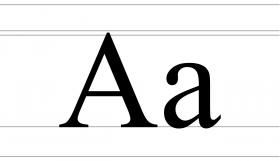A is for...
A is for...
A is for Architectural. We usually hold an Architectural Salvage and Garden Statuary sale in Diss every eight or nine weeks throughout the year. We have the benefit of plenty of space, both for sizeable lots and for the specialist transport vehicles required to ship the pieces in and out of auction; and this is a real luxury for those needing to sell, or looking to acquire, large individual unique pieces that are not sourced off the shelf!
Statuesque statues, feature fountains, swivelling summer-houses, entire wood-panelled rooms and gigantic oak beams are amongst the range of items we auction off. We sell to private customers, specialist trade and historic building conservation projects. Unfortunately, although already prepared, our sale scheduled for Saturday 4 April has had to be postponed due to government restrictions in relation to the management of the Coronovirus, but it will be held on a future date, once it is safe to do so.
While we’re on the subject of “A”…
A is for a variety of important styles and movements, influencing architectural schemes as much as other areas of the arts.
A is for the Adam Period: named after the influences of architect and designer Robert Adam (1728 – 1792) who worked in the Neoclassical style. Elegant and refined, this is a style with an emphasis on straight vertical lines.
A is for the Aesthetic movement, a late 19th Century English artistic movement based on the theory of “Art for Art’s Sake”. It employed many international tastes and art forms, including ancient insights from the Orient. Notable names associated with this movement in the wider context of art and literature were Aubrey Beardsley and Oscar Wilde.
A is for Arts and Crafts, also an English movement of the late 19th Century, but which was equally embraced throughout Britain, with much influence deriving from Celtic tarditions. John Ruskin and William Morris are acknowledged as being its founders. It was borne from a reaction against industrialisation and mass production and it advocated a return to traditional craftsmanship.
A is for Art Nouveau which, although established as a style in the 19th Century, survived right up until the First World War. It was popular all over Europe and has special association with France. Styles were naturalistic, with asymmetric shapes, sometimes impractical and apparently defying scientific laws, highly decorated with plant tendrils, flowers and romantic maidens with long, flowing hair.
Finally for now,
A is for Art Deco, a distinctive style characterised by geometric line and patterns, clean, anguar lines and bright, lively colours – a polar opposite to Art Nouveau. It is named after “l’Exposition des Arts Decoratifs” held in Paris in 1925. It emerged during the Age of Jazz and complemented it perfectly.

